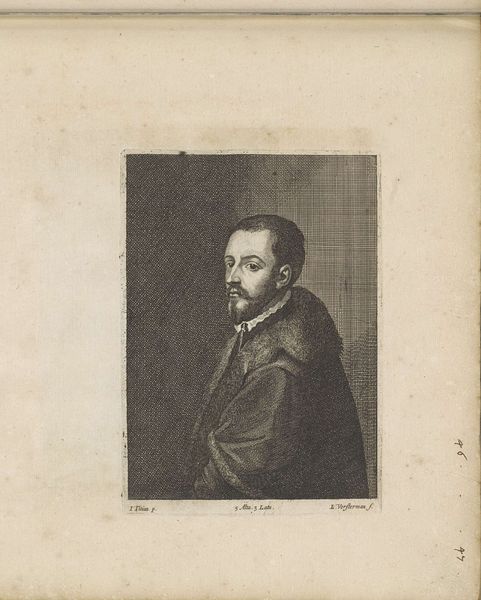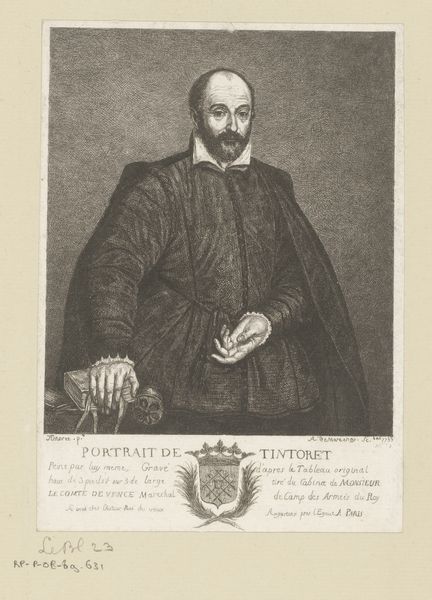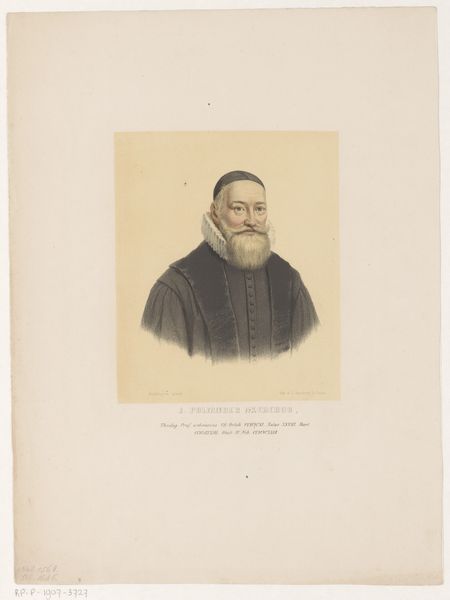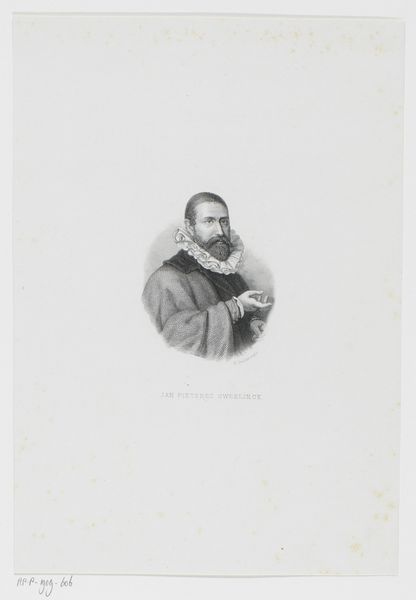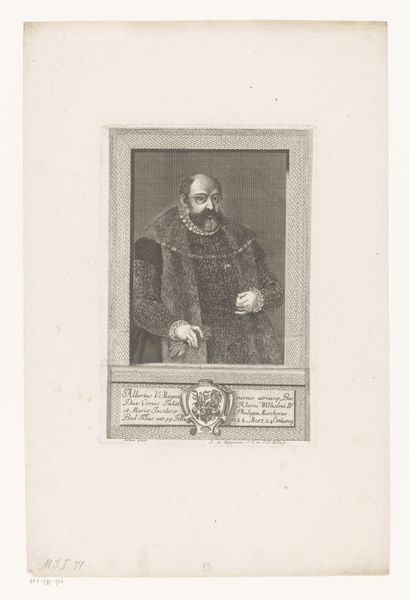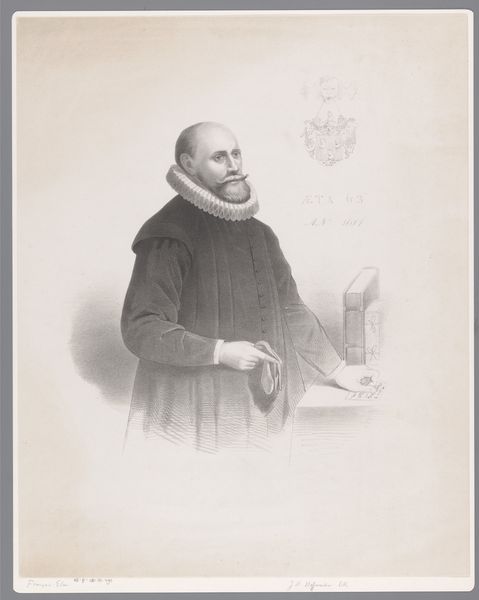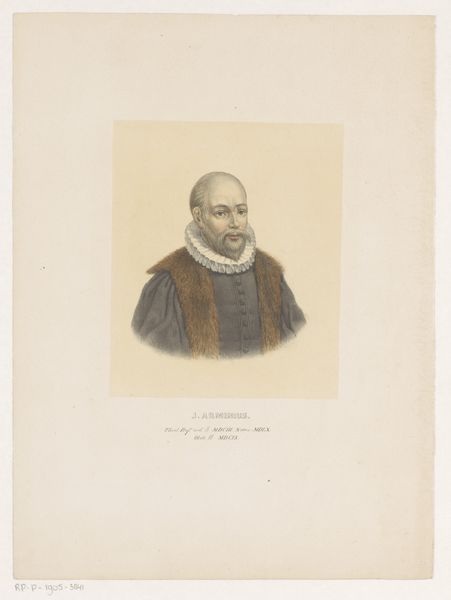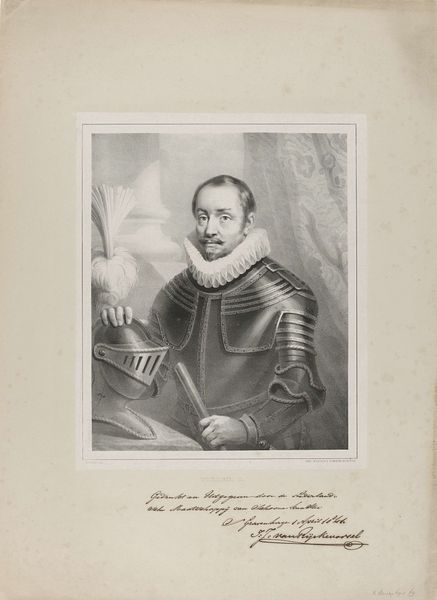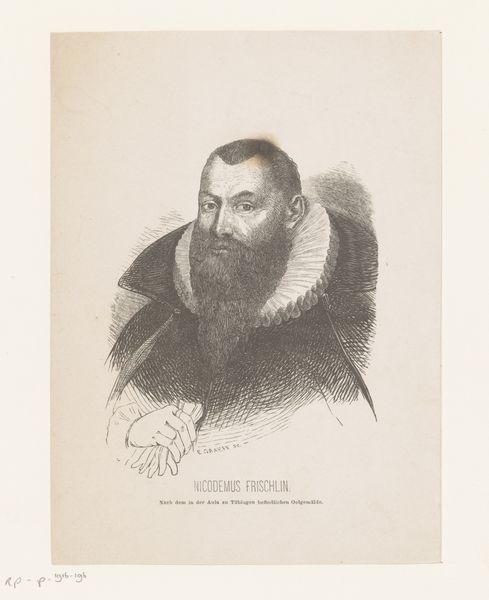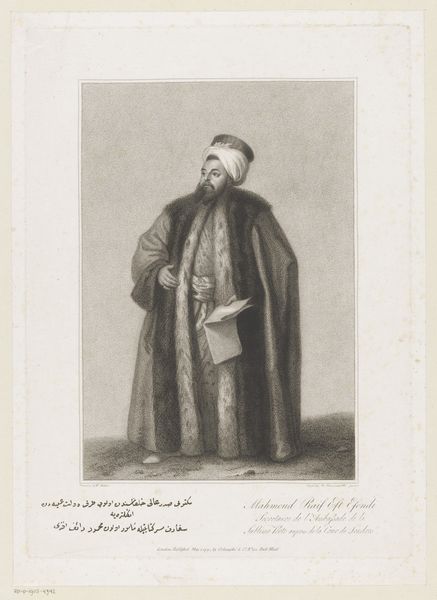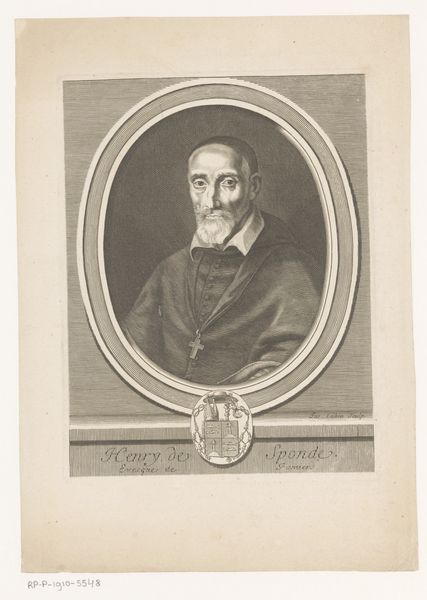
print, woodcut, engraving
#
portrait
# print
#
woodcut
#
history-painting
#
engraving
Dimensions: 114 mm (height) x 101 mm (width) (bladmaal)
Editor: This is "Frederik den anden," an engraving and woodcut print made sometime between 1849 and 1879. It depicts a regal figure, and what strikes me immediately is the stark contrast created by the engraving; the texture seems almost palpable. What compositional elements stand out to you in this piece? Curator: The most immediate aspect is the figure's dominance of the pictorial space. Observe how the engraver utilizes the textural contrast – smooth skin versus the intricate fur and patterned fabric. The light is strategically deployed to enhance the volume and hierarchical importance, drawing attention to the face, hands and ornamentation, the very markers of the sitter's identity. Note the sitter's gaze which lends to a study of pictorial construction, what do you see? Editor: The gaze does seem…unengaged. I see a meticulous arrangement, a study in controlled texture and stark values. It almost feels like the details are there to showcase technique rather than to create an authentic impression of the man. Curator: Precisely! It adheres to established visual paradigms, privileging representation over psychological depth. Consider the geometric structure, the orthogonal lines in the table contrasting with the curves of the cloak; it's a stage for the performance of power. It exemplifies art of the period. Do you think there is any psychological significance? Editor: Perhaps the lack of dynamism emphasizes stability? The portrait feels almost like a symbol rather than a study of an individual. It highlights a certain societal position through form, detail, and visual language. Curator: Precisely. It becomes less about Frederik and more about the ideal he embodies, skillfully communicated through the visual lexicon of status and control. Through considered formal examination we start to recognize the structure underneath this veneer of the piece. Editor: So, it seems this piece uses established aesthetic methods, directing the observer to consider not just what is portrayed but, importantly, how it’s conveyed, shifting our understanding of both the image and what it represents. Curator: Yes, an excellent encapsulation, the visual grammar itself reveals much about artistic choices and the ideological underpinnings behind representational strategies within artworks.
Comments
No comments
Be the first to comment and join the conversation on the ultimate creative platform.

